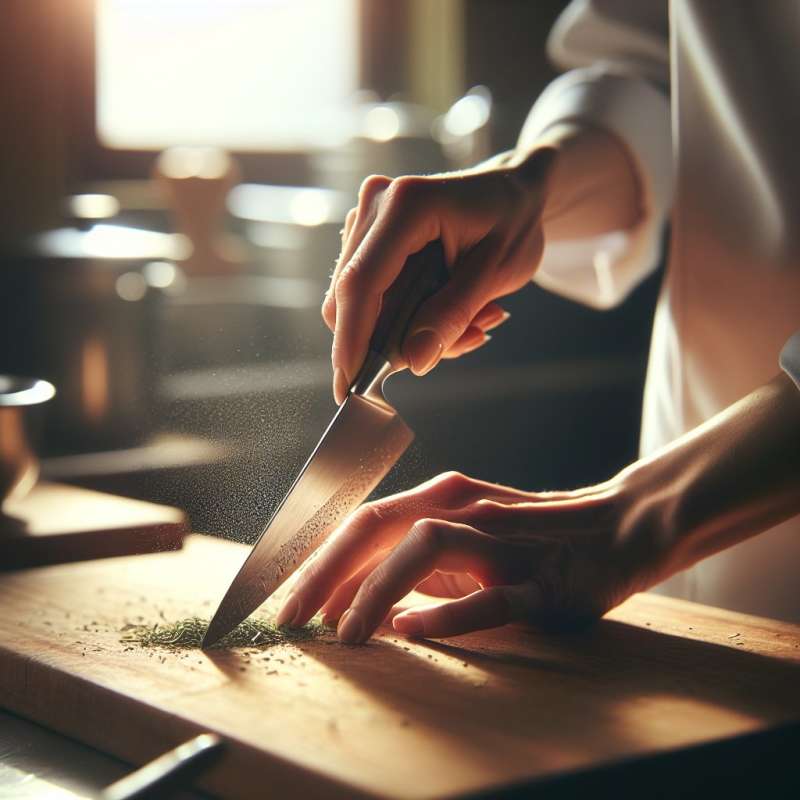
The History of Knives
Knives have been essential tools for over 2 million years. Originally flint tools, they evolved into copper and bronze blades, becoming a cornerstone for culinary arts and a symbol of chef craftsmanship.
Types of Kitchen Knives
A chef's arsenal includes various knives. The chef's knife for versatile cutting, paring knife for delicate tasks, serrated bread knife, and santoku for slicing, dicing, and mincing showcase the specialty of each blade.
Holding Your Knife Properly
Proper grip enhances control and safety. The 'pinch grip'—pinching the blade between thumb and forefinger, while wrapping remaining fingers around the handle—is widely recommended for precision and reduced hand fatigue.
Mastering the Rock Chop
The rock chop is essential for mincing. With the knife's tip anchored, the blade rocks up and down. This technique requires a sharp, curved blade to maintain contact with the cutting board.
The Importance of Honing
Honing straightens a knife's edge without removing metal, unlike sharpening. Regular honing maintains the edge between sharpening sessions, ensuring optimal performance and extending the knife's lifespan.
Julienne Like a Pro
Julienning transforms vegetables into matchstick shapes. The technique involves precise, uniform cuts. Mastering it enhances the visual appeal and consistency of cooking times in dishes.
Knife Care Best Practices
Proper knife care includes hand washing and drying to prevent rust. Wood or soft plastic cutting boards preserve the edge, and storing knives in blocks or on magnetic strips prevents dulling.
What material were earliest knives made from?
Stainless steel
Flint
Bronze initially
Company